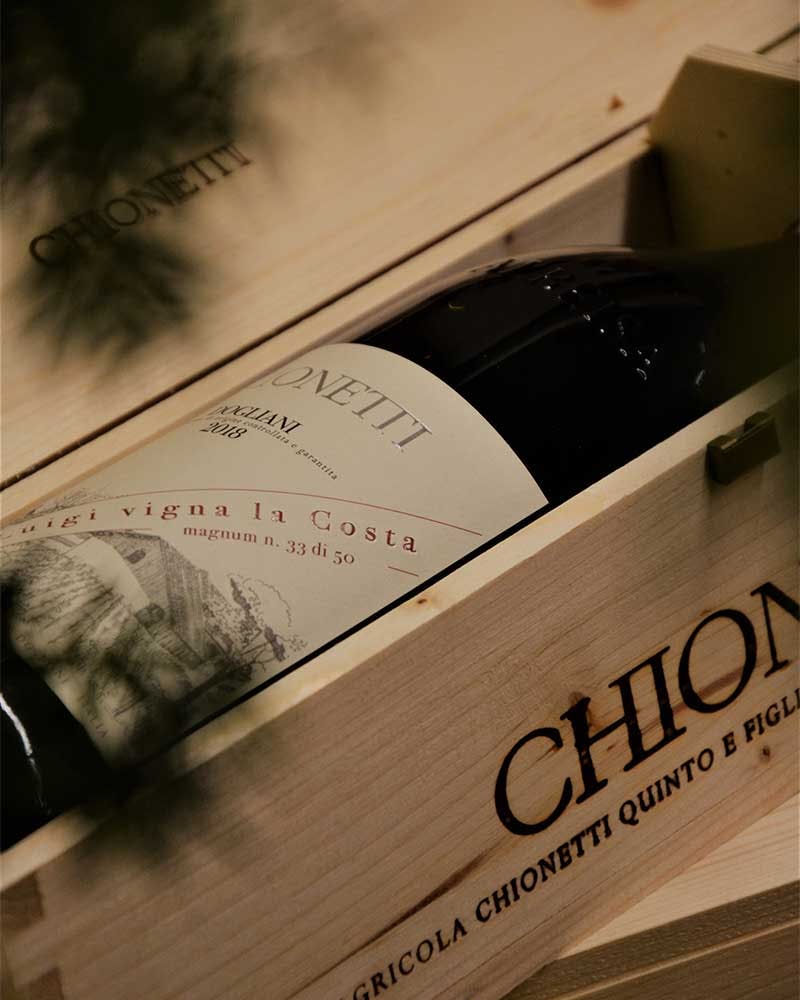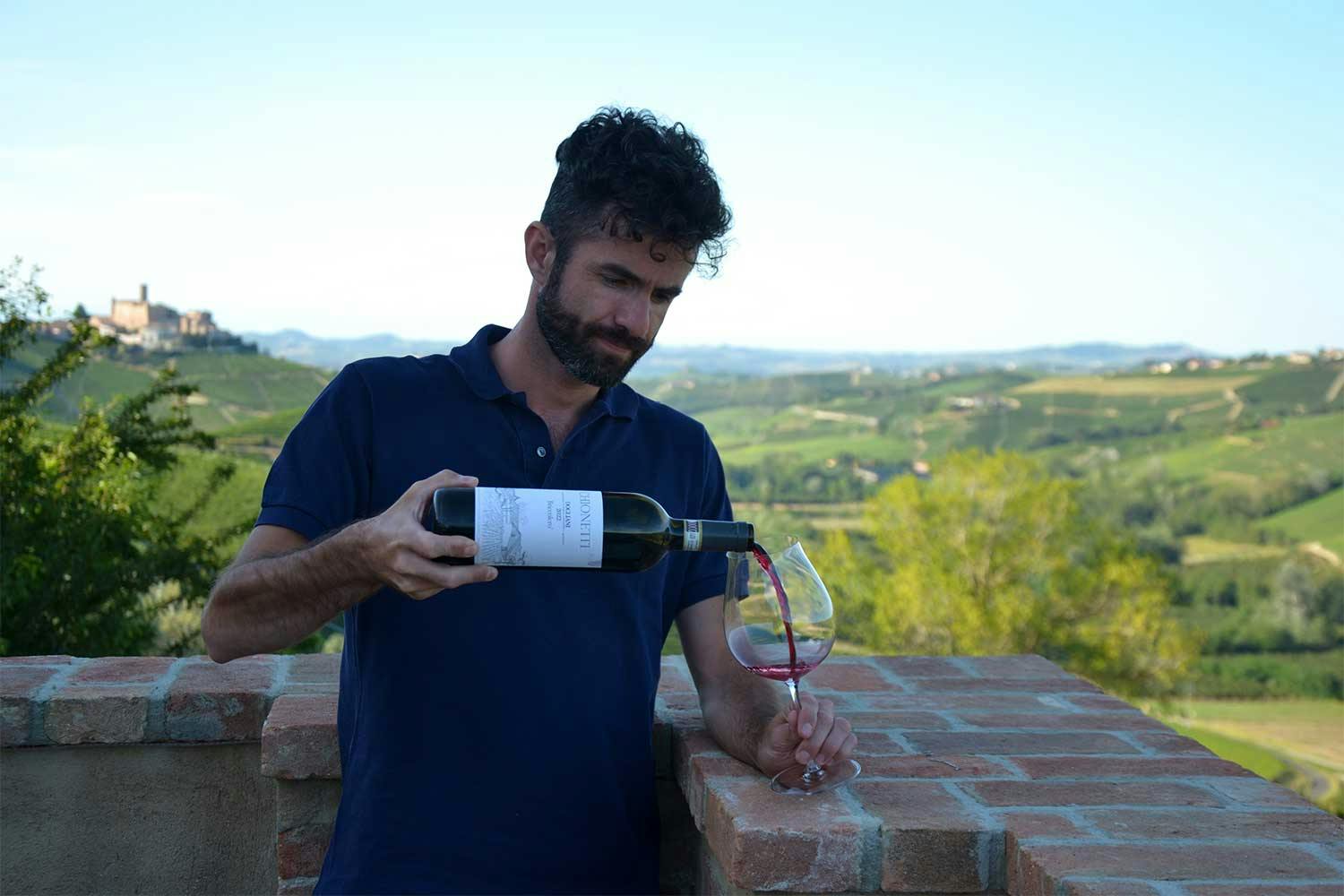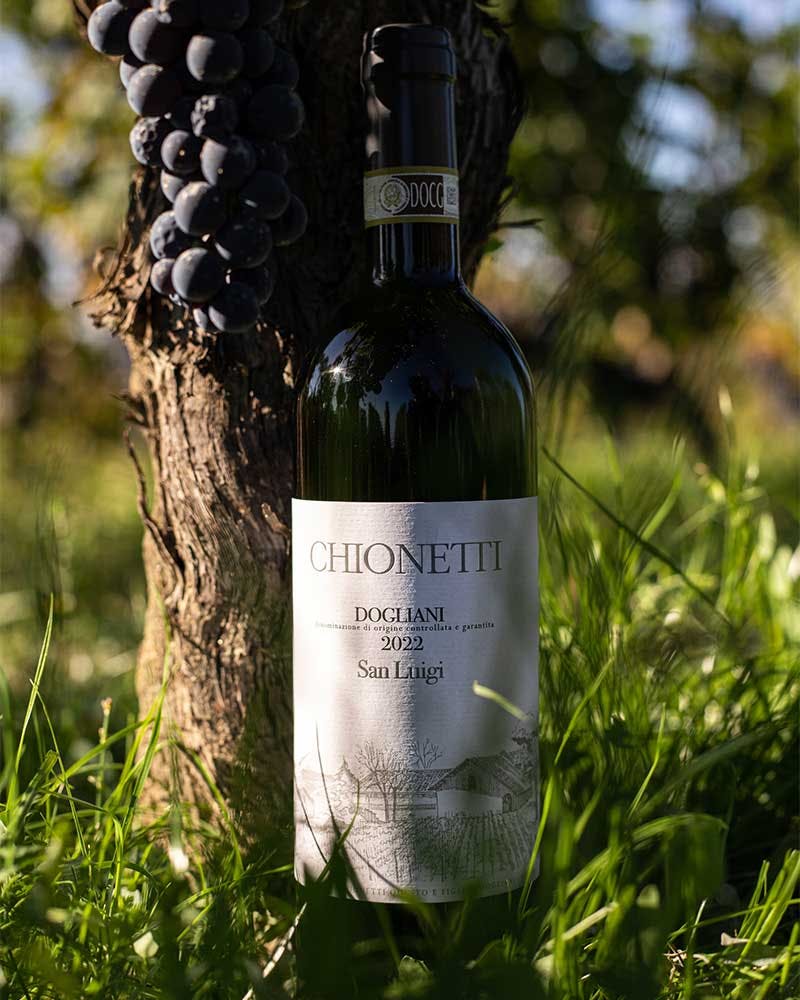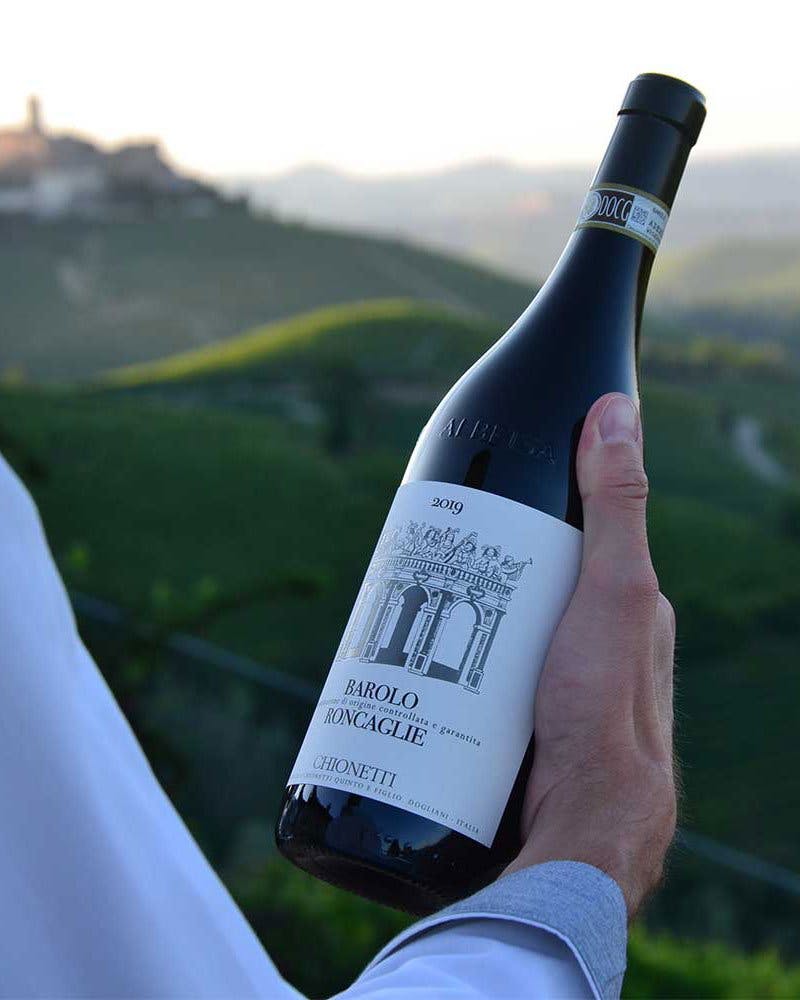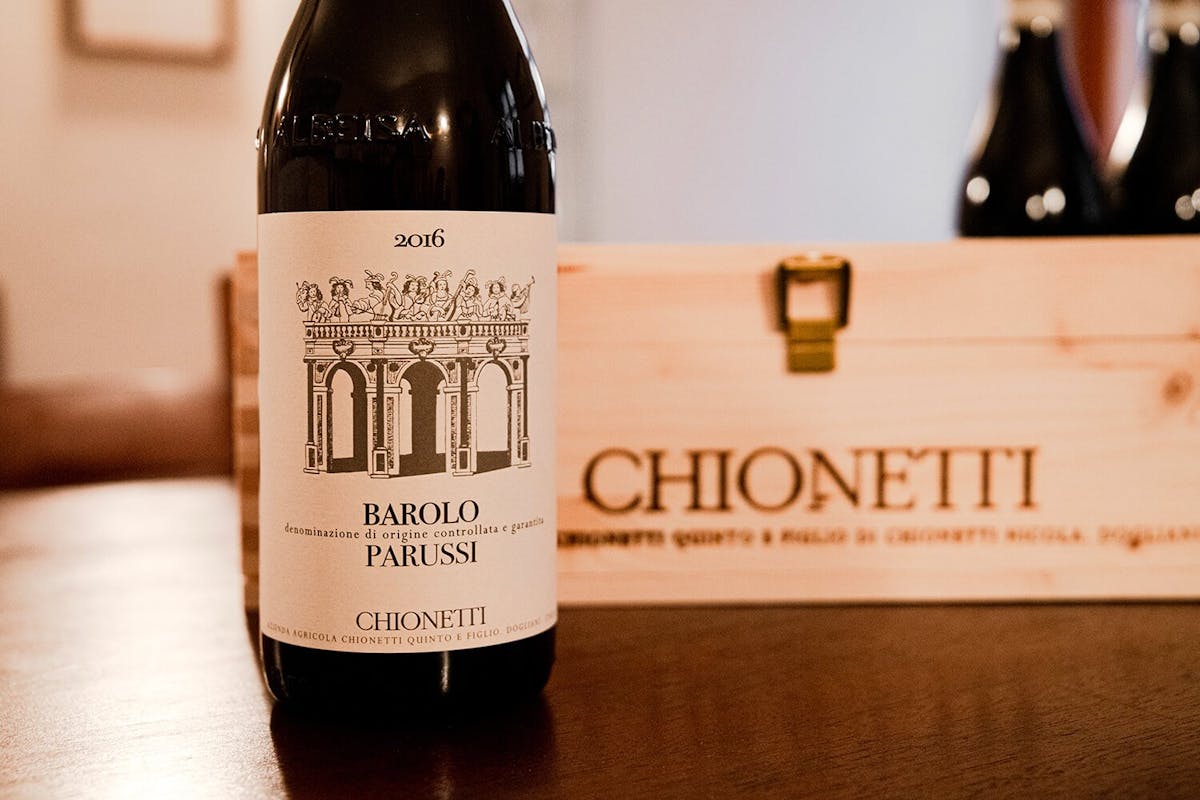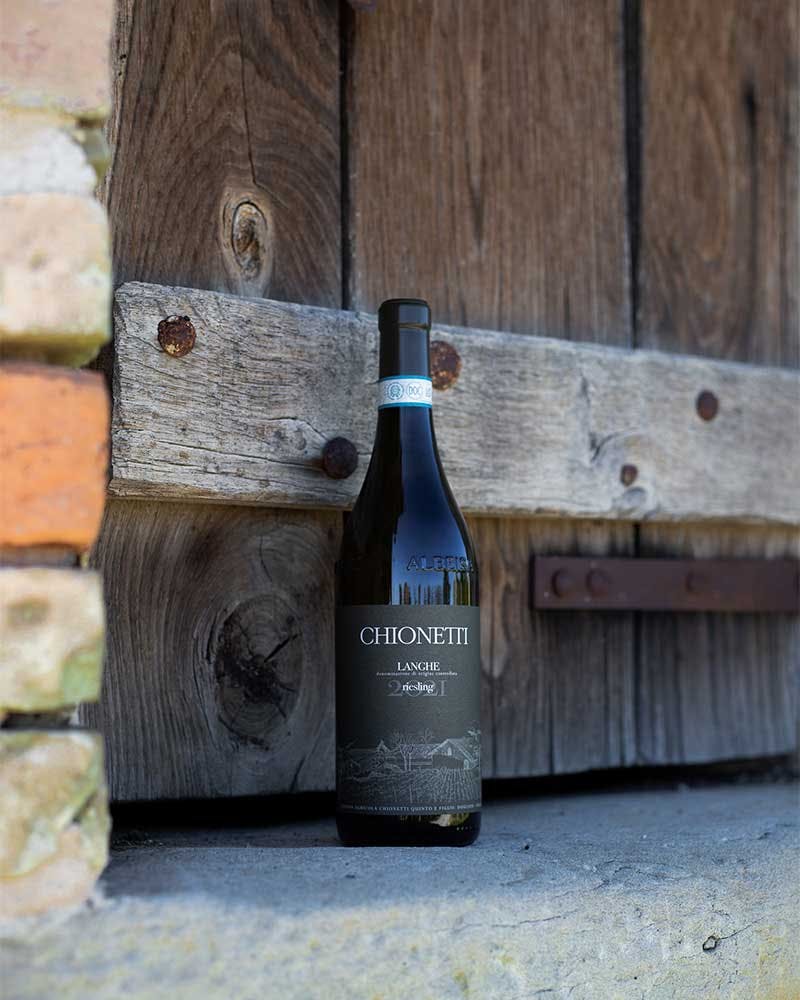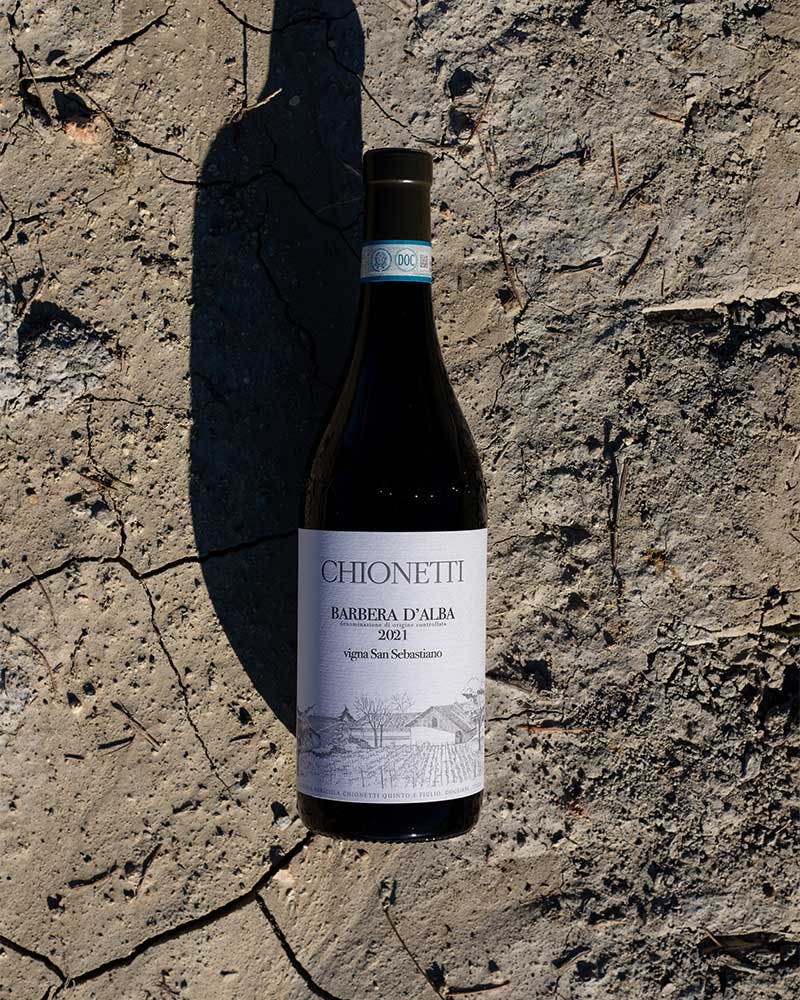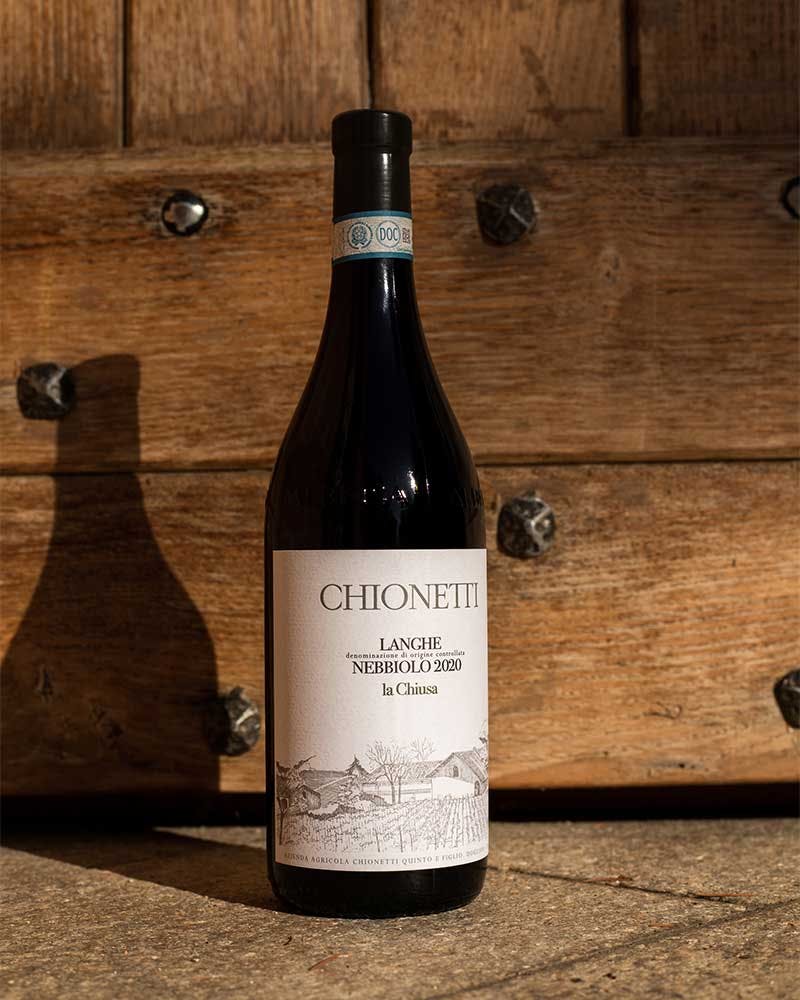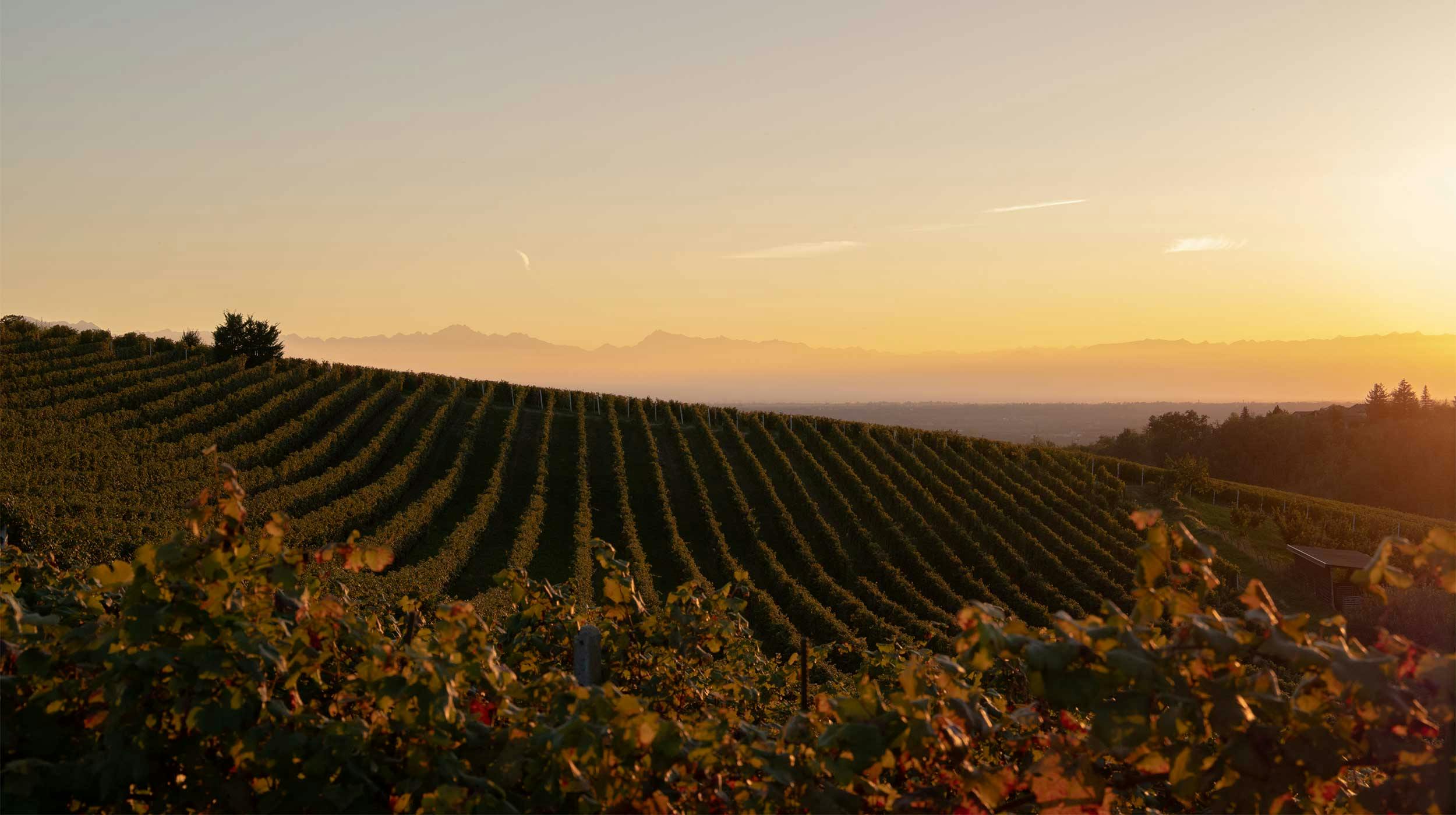
Our territory
From Dogliani to Barolo
DoglianiOur wines are born in Dogliani, in the extraordinary territory of the southwestern Langhe in Piedmont. The terroir of Dogliani has a truly ancient history when it comes to the cultivation and winemaking of dolcetto. In fact, it offers an ideal soil and climate for this challenging grape variety. The hills here are higher, closer to the Maritime Alps, with cooler temperatures, and feature the noble soils of the Langhe, which give rise to unique wines.
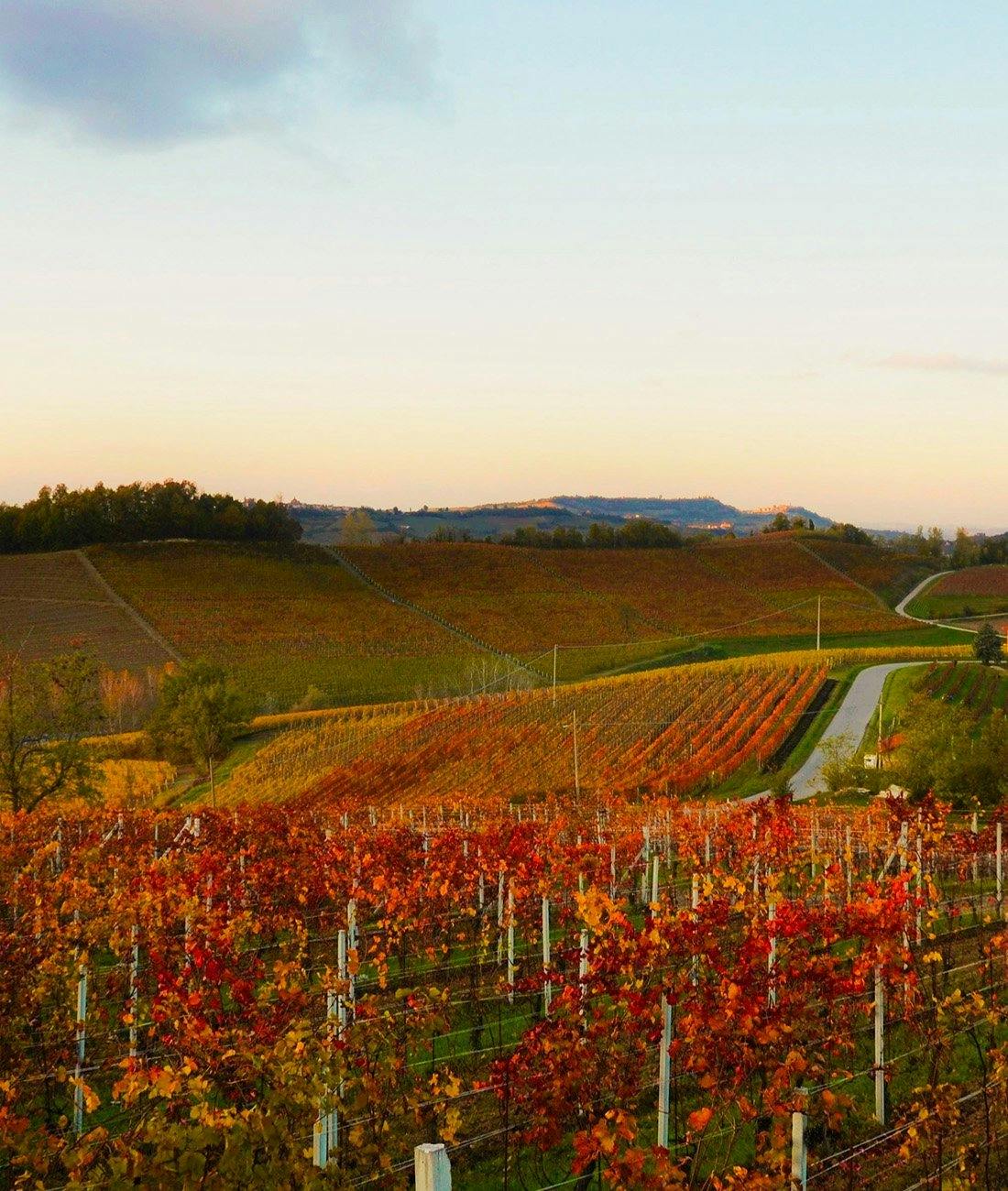
The Chionetti family has linked its history to the vine since the 19th century. From 1912, when Giuseppe Chionetti bought the farmhouse in San Luigi di Dogliani, to 2015, when Nicola and Maria began making Barolo wine, five generations have followed.
The San Luigi Valley
In the hamlet of San Luigi, adjacent to our winery, lie the Dolcetto vineyards. As far back as the 1960s, Quinto Chionetti identified that the southwest slope of the San Luigi hill produced wines easier to drink, while the southeast slope yielded wines characterized by greater structure and minerality. This diversity is largely attributed to the distinct qualities of the soil.
On the western slope, the source of our San Luigi, the soil is notably fertile with a slight reddish hue, featuring a higher clay content. On the other side, on the steep eastern slope and at the hill’s peak, where our Briccolero and San Luigi Vigna La Costa originate, the soil is lighter in color and boasts a unique composition of clay, silt, and sand.
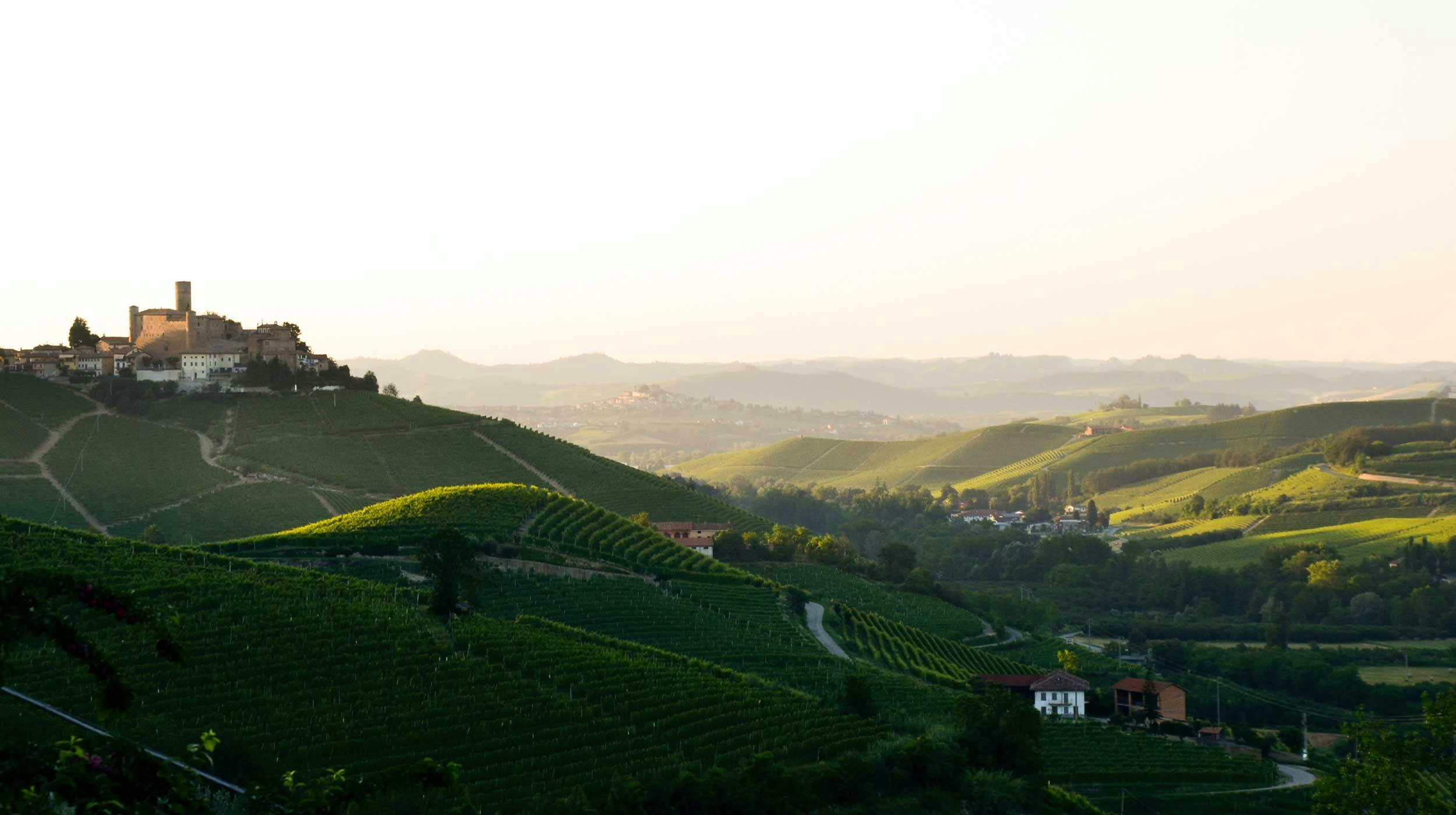
Monforte - Bussia, Vigna Pianpolvere In the 1980s, Andrea Chionetti had plans to cultivate a small vineyard in Monforte d'Alba, to try his hand at a different wine and produce a few bottles of Barolo. However, this project never came to fruition, as Andrea passed away in 1988, along with his eldest daughter. Many years later, Maria, his wife, and their other son, Nicola, fulfilled the old dream by acquiring their first Barolo vineyard in 2015 in Pianpolvere (Bussia), located in the municipality of Monforte d'Alba.
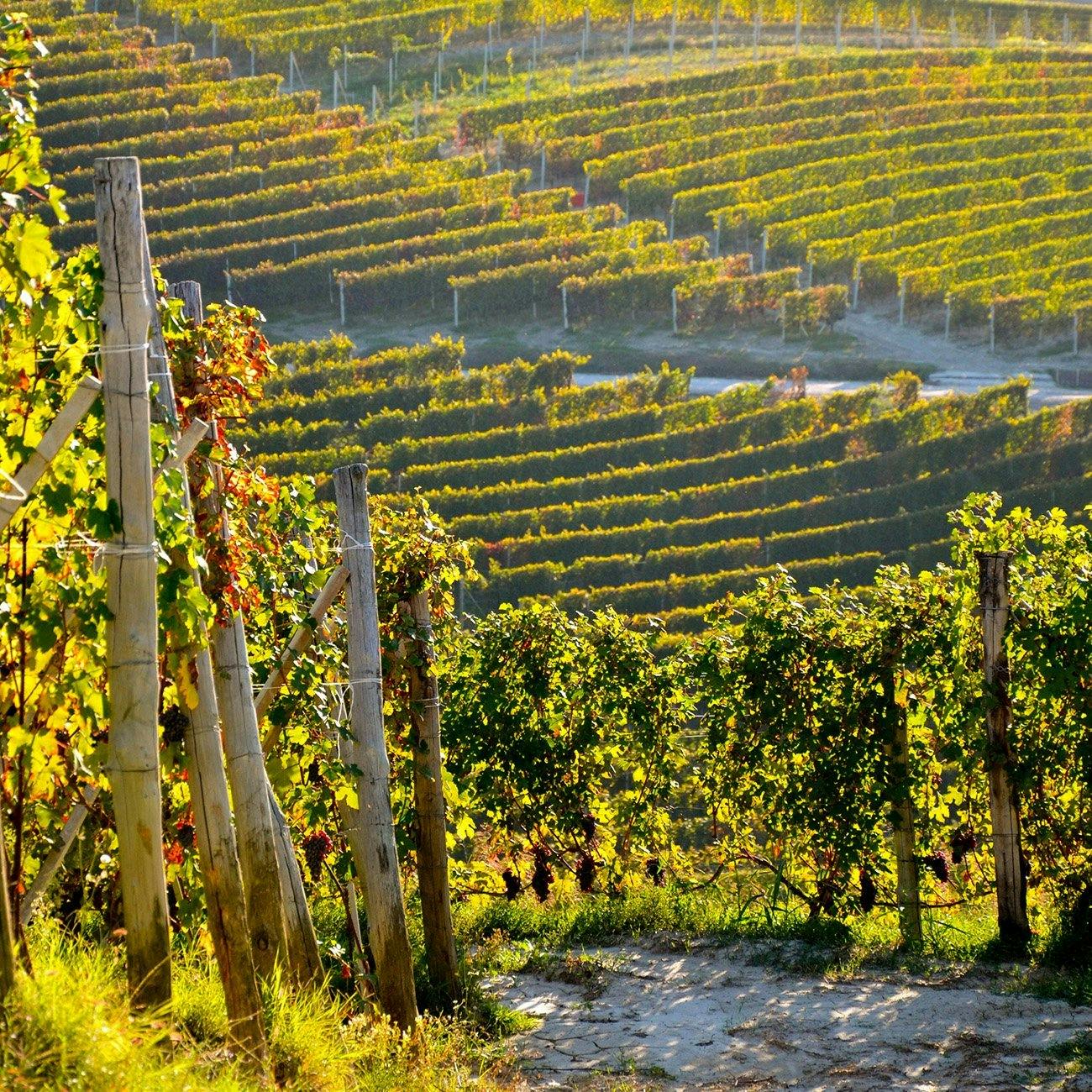
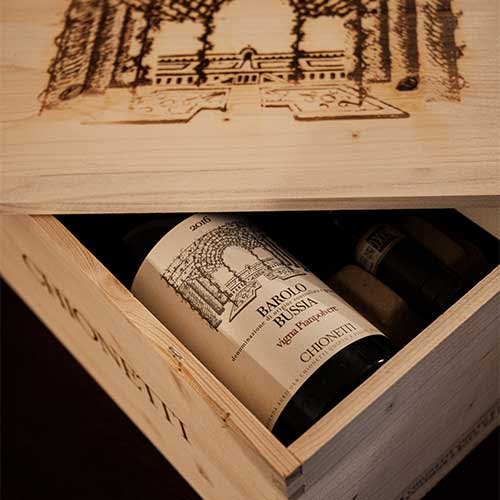
Pianpolvere is an exceptional area within the Bussia region, initially recognized as a single cru. The Pianpolvere vineyard is located on the ridge of the hill at approximately 400 meters above sea level, sloping towards the southwest. Due to its location, it has retained the original characteristics of the mother rock. As a result, the soil is light, with clay but also containing a considerable amount of sand and gravel.
The rock formation can be traced to the Sant’Agata Fossil Marls.
Parussi and Roncaglie
Parussi is situated in the municipality of Castiglione Falletto, with a southwest exposure at an altitude of approximately 220 meters. This vineyard is part of the Typical Sant’Agata Fossil Marl formation, with a slight presence of sand.
On the other hand, Roncaglie is located in the municipality of La Morra, on the southeast slope at an altitude of about 300 meters. It shares the Sant’Agata Fossil Marl composition, albeit of a laminated type.
Still terroir and new perspectives
In addition to the historic Dogliani and Barolo, we are dedicated to exploring the nuances of other grape varieties typical of the Langhe region: Barbera and Nebbiolo. The Barbera d’Alba comes from the San Sebastiano vineyard in Monforte, while our Langhe Nebbiolo vineyard is in Dogliani, offering the characteristic freshness of the Dogliani terroir.
Furthermore, in 2019, we introduced Riesling. The vineyard, with Rhine Riesling clones, is located in the Martina hamlet in Dogliani, at an altitude of approximately 600 meters, in a highly promising area of the so-called Alta Langa.
